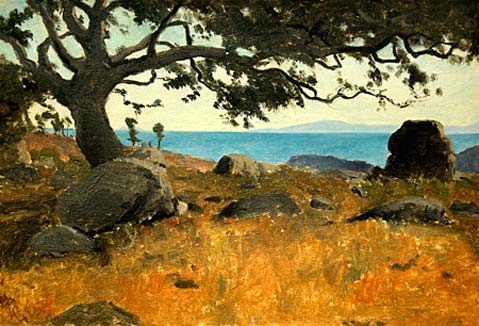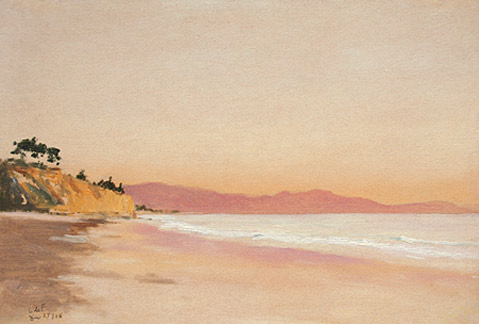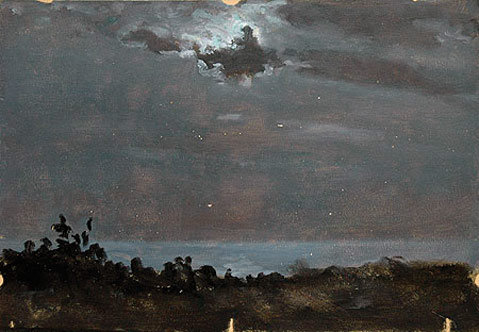De Forest Unlocked
Sullivan Goss Uncovers Long Unseen Paintings

This large show of small works by Lockwood de Forest rewrites the history of art in Santa Barbara and makes a case for de Forest as at once an adventurous early plein air landscape painter, particularly of nocturnes, and an intuitive proto-Modernist hovering at the edges of abstraction. De Forest’s medium is oil, his surface board, and these horizontally oriented paintings are all approximately 9×14 inches. But within the grid-like similarity of the series, variations of scene, mood, and lighting vie with certain compositional consistencies to produce an intense and lingering overall effect.

The 40 Days and 40 Nights of the show’s title refers to the fact that half of the paintings were done at night, an extraordinary feat considering that they were completed in the early 20th century, long before the advent of modern work lights. With this show, de Forest, whose reputation has previously rested largely on his skill as a connoisseur and dealer in Indian art and furniture, vaults to the front ranks of the West Coast painters. As a group, the nocturnes represent a sustained performance that’s on par with some of the great achievements of both the Romantic and the Modernist eras.
Bringing his signature Tonalism to the subject of the moon over the Pacific, de Forest elevates plein air practice to a kind of materialist mysticism. It’s as if the great adventurer and explorer were designating the sea-borne moon as a mandala for dwellers here on the Pacific Rim.
Unlike many typical Western practitioners of landscape, de Forest eschews the picturesque convention of offsetting the subject and instead centers the moon along a vertical line that usually bisects the picture plane. In pictures such as “White Full Moon Reflecting on Water,” the implied center vertical becomes a glowing zip of light pointing skyward and reflecting not only the moon, but the aspirations of the artist as well. The artist’s patient, focused attention on effects of atmosphere and cloud cover yield astonishing results when the moon is hidden from view, as in the magnificent and brooding “Single Cloud Over Moon.” These haunting meditations on the dynamics of absence and presence are a must-see for this winter arts season.




